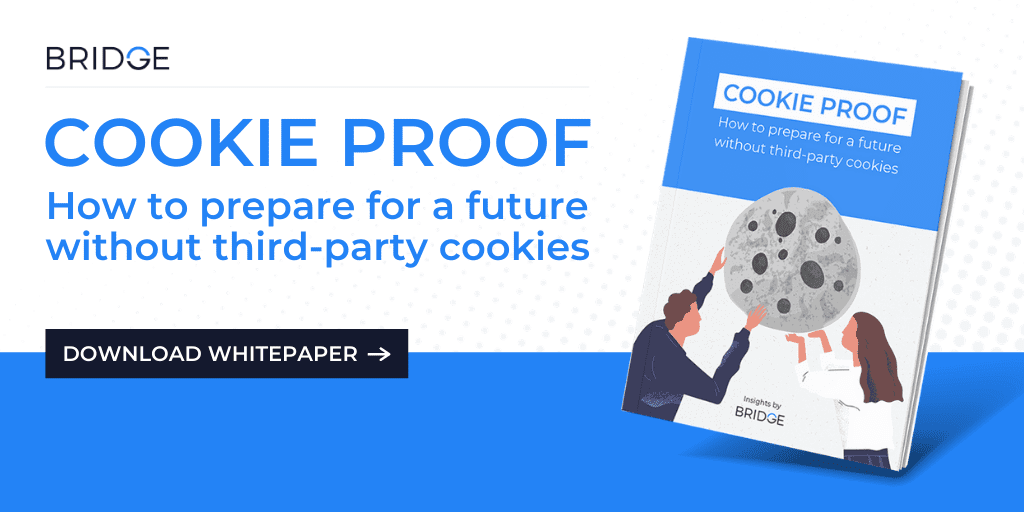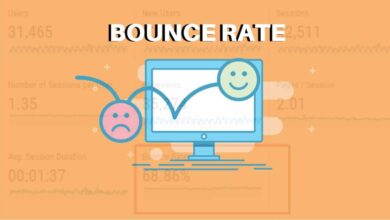
Web Without Third-Party Cookies A New Era
Web without third party cookies – Web without third-party cookies is ushering in a new era for online experiences. This shift impacts everything from advertising models to user privacy and the very architecture of the web. We’ll delve into the historical context, explore the effects on businesses and users, and examine the technical adjustments needed for a future without these ubiquitous tracking tools.
This transition presents both opportunities and challenges. Understanding the intricacies of this change is crucial for navigating the evolving digital landscape. We’ll analyze alternative tracking methods and discuss the potential implications for online advertising and privacy in the years to come.
Overview of Third-Party Cookies

Third-party cookies, once ubiquitous in the online world, have become a focal point of debate and change. Their use has profoundly influenced how websites track user behavior, personalize experiences, and generate revenue. Understanding their history, function, and types is crucial to comprehending the current landscape of the internet and the shift towards a cookie-less future.Third-party cookies allow websites other than the one a user is directly visiting to track their online activity.
This ability to collect data across different sites creates a comprehensive profile of the user’s browsing habits, enabling targeted advertising and other forms of personalization. However, this practice raises concerns about privacy and user control over their data.
Historical Context
The use of third-party cookies evolved alongside the development of the internet and the growth of online advertising. Early websites relied on simple tracking mechanisms to understand user preferences. As the web matured, the need for more sophisticated tracking methods became apparent, leading to the development of third-party cookies. This allowed companies to follow users across multiple websites, constructing a more detailed picture of their interests and behaviors.
Fundamental Purpose and Function
The fundamental purpose of third-party cookies is to facilitate targeted advertising. By tracking user behavior across various websites, advertisers can identify patterns and preferences, allowing them to tailor advertisements to individual users. This personalized approach aims to increase ad effectiveness and improve user experience by delivering relevant content.
Types of Third-Party Cookies
Various types of third-party cookies serve different purposes within the online advertising ecosystem. These include cookies used for retargeting, behavioral advertising, and cross-site tracking.
Evolution of Third-Party Cookies
| Year | Technological Advancements | Societal Impacts | Examples |
|---|---|---|---|
| Early 2000s | Initial implementation of third-party cookies. Simple tracking mechanisms emerge. | Growing awareness of data collection, but privacy concerns remain largely unaddressed. | Basic website analytics tools, limited ad targeting. |
| Mid-2000s | Increased sophistication in tracking techniques. Emergence of more complex advertising networks. | Concerns about privacy and data security begin to surface, leading to some regulatory scrutiny. | Development of sophisticated ad platforms, retargeting campaigns become more prevalent. |
| 2010s | Expansion of data collection practices. Cross-site tracking becomes more pervasive. Rise of social media platforms as major data sources. | Public discourse around privacy and data rights intensifies. Increased calls for greater user control over data. | Sophisticated behavioral targeting, use of data from multiple sources. |
| Present and Future | Shift towards a cookie-less future. Development of alternative tracking technologies. Focus on privacy-enhancing technologies. | Ongoing debate on privacy versus personalization. Regulations emerge to address data collection practices. | Privacy-focused advertising frameworks, alternatives to cookies like FLoC (Federated Learning of Cohorts), and other approaches are being developed and implemented. |
The Web Without Third-Party Cookies
The shift away from third-party cookies is fundamentally altering the digital landscape. This change represents a significant paradigm shift, forcing businesses to rethink their strategies for online advertising and user engagement. The implications extend far beyond simply losing a tool; it necessitates a complete overhaul of how companies interact with their audiences online.The removal or limitation of third-party cookies has profound consequences for businesses reliant on targeted advertising and personalized user experiences.
Traditional methods of tracking user behavior across websites are rendered obsolete, requiring businesses to adapt their strategies to new privacy-focused environments. This adaptation is not just about changing tools; it’s about reimagining the entire relationship between businesses and consumers in the digital sphere.
Impact on Advertising Revenue Models
The reliance on third-party cookies has been a cornerstone of many advertising revenue models. These models leverage data collected across websites to create detailed user profiles, enabling highly targeted advertising campaigns. The absence of this data collection significantly impacts the precision of these campaigns, and therefore the effectiveness and return on investment. Businesses will need to explore alternative methods for collecting user data and for measuring campaign performance, such as first-party data collection and contextual advertising.
Navigating the web without third-party cookies is a big shift, forcing businesses to rethink their strategies. This directly impacts B2B lead generation campaigns, like the ones we’re helping clients with at b2b lead generation campaign. Ultimately, we need to find new ways to track user behavior and personalize experiences without relying on those pesky cookies.
The shift necessitates innovation in measurement and attribution.
Impact on Targeted Advertising and Personalized User Experiences
Targeted advertising, which tailors advertisements to individual user preferences based on browsing history, will be significantly altered. Without third-party cookies, businesses will have less granular user data, potentially limiting the precision of targeting. Consequently, the degree of personalization in user experiences might diminish. This does not necessarily mean that personalization will disappear entirely, but the methods and tools employed to achieve it will undergo a substantial transformation.
Businesses may need to rely more heavily on user-provided data and contextual information to deliver relevant content and advertising.
Adapting Strategies to a Web Without Third-Party Cookies
Businesses need to adapt their strategies to navigate this new environment. This necessitates a multifaceted approach, including building robust first-party data collection systems, embracing contextual advertising, and leveraging alternative technologies for user tracking and profiling. This is not a simple substitution but a fundamental re-evaluation of the entire advertising strategy. The transition requires a proactive and forward-thinking approach to remain competitive in the evolving digital landscape.
Comparison of Advertising Strategies Before and After Third-Party Cookie Elimination
| Characteristic | Before Third-Party Cookies | After Third-Party Cookies | Key Differences |
|---|---|---|---|
| Data Collection | Relied heavily on third-party cookies for tracking user behavior across multiple websites. | Focus on first-party data collection; user-provided data; and contextual signals. | Shift from passive tracking to active user engagement. |
| Targeting Precision | Highly targeted ads based on extensive user profiles built across the web. | More generalized targeting based on limited user data; contextual cues become more critical. | Decreased granularity in targeting. |
| Advertising Revenue | Revenue largely derived from advertising impressions and clicks, facilitated by extensive user data. | Potential for revenue models to shift towards subscription services or premium content. | New avenues for monetization are required. |
| User Experience | Potentially intrusive personalized ads based on comprehensive user profiles. | Potential for more relevant and user-centric advertising, as contextual cues are prioritized. | Emphasis on user privacy and context-relevant ads. |
The Web Without Third-Party Cookies
The internet as we know it is built on a foundation of data exchange. Third-party cookies, crucial for tracking user behavior across websites, are now facing scrutiny and potential obsolescence. This shift in the digital landscape will undeniably impact users in various ways, affecting both privacy and experience.The absence of third-party cookies fundamentally alters the digital ecosystem. Sites will lose the ability to precisely track users’ online journeys across multiple platforms, impacting the way companies and individuals interact online.
This change will bring about a profound transformation in how the internet operates, forcing a re-evaluation of advertising models and user experiences.
Impacts on User Privacy
The elimination of third-party cookies directly enhances user privacy. Without these cookies, websites cannot collect and share detailed information about users’ browsing habits across the web. This limits the ability of advertisers and other entities to build comprehensive profiles of individual users. Users will have more control over their personal data and their online experience. This heightened privacy will allow users to navigate the web with greater confidence, knowing that their data is not being relentlessly tracked and potentially exploited.
Impacts on User Experience: Personalized Recommendations
Personalized recommendations, a staple feature on many websites, will undergo significant changes. Without third-party cookies, websites will have a harder time building a complete picture of user preferences. This may lead to less personalized recommendations, potentially impacting the user experience. However, alternative methods of personalization, such as relying on user-provided data or machine learning models trained on limited, direct data, could emerge.
The shift to a less intrusive personalization approach could lead to more focused recommendations that are relevant to the user’s explicit interests.
The web without third-party cookies is rapidly changing the digital landscape. It’s a huge shift, forcing businesses to rethink their strategies. For instance, Kristian Borghesan, director of marketing at FutureVault, kristian borghesan director of marketing futurevault , has been actively exploring these new approaches. This new paradigm demands innovative solutions for maintaining user engagement and relevant advertising without relying on the previous tracking methods.
This presents both challenges and opportunities for businesses adapting to this evolving environment.
Impacts on User Experience: Content Filtering
Content filtering, another aspect of the user experience, is also affected. Third-party cookies have allowed websites to collect and analyze vast amounts of data to tailor content to user preferences. Without them, filtering may become less sophisticated. Websites may rely more on user input or adopt alternative approaches to filtering, potentially leading to less targeted but perhaps more diverse content.
Users might see more content that doesn’t perfectly align with their interests, but they could also discover new and unexpected material. The lack of a comprehensive user profile could potentially lead to less tailored content but also a broader range of exposure.
Potential Benefits for Users
The absence of third-party cookies offers several benefits for users. A decrease in targeted advertising could result in a less intrusive online experience. Users will have more control over their data and their online environment, fostering a more private and secure digital space. Increased privacy can lead to a more authentic and less manipulated online experience.
Potential Drawbacks for Users
The shift away from third-party cookies could present some drawbacks. Less personalized content or recommendations might lead to a less engaging user experience. Businesses reliant on data collection for targeted advertising might face challenges in reaching their target audience. However, this shift could spur innovation in data collection and personalization, potentially leading to more effective and user-friendly alternatives.
The change may cause temporary disruptions and adjustments for users and businesses, but it could also lead to a more sustainable and privacy-conscious digital environment.
Examples of Changes in User Experience
Consider a user browsing an e-commerce website. Without third-party cookies, the site might not be able to track the user’s preferences across different platforms. This could result in fewer personalized product recommendations. However, the user could still receive recommendations based on products viewed previously on that specific site. Alternatively, a news website might provide a broader range of articles, potentially exposing the user to diverse perspectives.
While personalized recommendations might decrease, a wider range of content could be presented, offering a different user experience.
Technical Implications of a Web Without Third-Party Cookies: Web Without Third Party Cookies

The phasing out of third-party cookies necessitates significant adjustments across the web ecosystem. This shift impacts not only website functionality but also the fundamental architecture of how the internet operates. Sites reliant on third-party tracking for analytics, advertising, and personalization will need to adapt to alternative methods. This transition demands a comprehensive understanding of the technical implications, including the development of new tracking mechanisms and architectural changes.The absence of third-party cookies forces a re-evaluation of how websites gather and utilize user data.
It necessitates a paradigm shift from relying on cross-site tracking to localized, consent-based interactions. This evolution will lead to changes in user experience, requiring careful consideration of privacy and functionality.
Technical Adjustments Needed to Websites and Browsers
Websites will need to implement significant changes to function without relying on third-party cookies. This includes adjusting how they track user behavior and tailor content. Browsers will also need updates to accommodate these changes, such as enhanced mechanisms for managing user data and preferences. For example, websites may need to implement more granular consent mechanisms to allow users to control data collection, and browsers will need to support these mechanisms.
This necessitates a change in how websites handle user data, shifting from implicit tracking to explicit consent-based interactions.
Development of New Tracking Methods or Technologies
The absence of third-party cookies necessitates the development of alternative tracking methods. One approach is to leverage first-party cookies, which are cookies set by the website a user is actively visiting. This method limits tracking to the domain the user is currently engaged with. Federated learning of cohorts, or other techniques for aggregating data across multiple domains, may also be employed, requiring strict adherence to privacy regulations.
Another approach is to use privacy-preserving technologies, like federated learning, which allows for data analysis without directly sharing individual user data.
Architectural Changes to Web Infrastructure
The web infrastructure needs substantial architectural adjustments to accommodate a world without third-party cookies. The existing ecosystem, reliant on third-party tracking, will need to be redesigned to prioritize user privacy. This includes developing more secure and transparent methods for collecting and sharing user data. For instance, the implementation of privacy-preserving technologies will need to be integrated into the core web infrastructure, potentially requiring the development of new protocols and standards.
Technologies for Maintaining User Data Privacy
| Technology | Description | Pros | Cons |
|---|---|---|---|
| Federated Learning | Allows multiple parties to train a machine learning model on their data without sharing the raw data. | Preserves user privacy, avoids data breaches, fosters collaboration. | Potentially slower model training, requires significant computational resources, may not be applicable in all cases. |
| Privacy-Preserving Computation | Enables computations on encrypted data, protecting user privacy. | Preserves user privacy, secure data handling. | Can be computationally intensive, may not be suitable for all types of computations. |
| Homomorphic Encryption | Allows computations on encrypted data without decryption. | High level of security, privacy. | Computational overhead, potential performance limitations. |
| Zero-Knowledge Proofs | Allows one party to prove a statement to another without revealing any other information. | High security, transparent data handling. | Complexity in implementation, potential performance issues. |
Alternatives to Third-Party Cookies
The demise of third-party cookies is forcing a significant shift in how websites track user behavior. This necessitates the exploration of alternative methods that maintain the functionality of tracking while respecting user privacy. These alternatives vary in their effectiveness and complexity, offering a range of solutions for different needs.This exploration will delve into several key alternatives, evaluating their strengths and weaknesses, and illustrating how they can be implemented in real-world scenarios.
We’ll examine the trade-offs involved in each approach, offering a comprehensive overview of the post-third-party cookie landscape.
Federated Learning of Cohorts
Federated learning enables multiple parties to train a machine learning model without sharing raw data. This is particularly relevant for tracking user behavior across websites and apps, where sensitive data is often involved. Instead of collecting user data directly, the models learn patterns from aggregated data sets. This decentralized approach significantly enhances user privacy.
The web without third-party cookies is forcing a lot of businesses to rethink their strategies. It’s a massive shift, and companies are scrambling to adapt. Case in point, Jar Digital’s recent win for “best B2B search marketing initiative,” ignite visibility awarded best B2B search marketing initiative , highlights the innovative approaches needed to thrive in this new landscape.
Ultimately, businesses need to find creative ways to maintain visibility and engagement without relying on the old cookie-based tracking methods.
Privacy-Preserving Tracking Technologies
Several privacy-preserving tracking technologies exist that aim to replace third-party cookies. These technologies leverage various methods to anonymize or aggregate data, thus reducing the risk of user identification while maintaining the ability to track user behavior. These approaches often involve techniques like differential privacy, federated learning, or homomorphic encryption.
First-Party Data Collection
Collecting user data directly from the website or app itself offers a viable alternative to third-party cookies. By focusing on collecting and analyzing first-party data, companies can build a more comprehensive understanding of user behavior and preferences without relying on external sources. This approach enhances control and transparency. However, it requires significant investment in data collection infrastructure and analysis.
Contextual Advertising
Contextual advertising focuses on delivering ads based on the content of the webpage or app. This approach avoids tracking individual users, instead targeting ads based on the topic or theme of the content. It’s a relatively privacy-preserving alternative, but it may not be as effective in targeting specific user segments. This method relies on accurate categorization and tagging of content.
Alternative Technologies Comparison
| Technology | Pros | Cons | Real-World Implementation Example |
|---|---|---|---|
| Federated Learning of Cohorts | Enhanced user privacy, avoids direct data sharing | Requires sophisticated infrastructure, potentially lower accuracy | Multiple retailers collaboratively analyzing purchasing patterns without exposing individual data. |
| Privacy-Preserving Tracking Technologies | Balances tracking with user privacy, often using anonymization techniques | Can be complex to implement, might require significant investment | A news website using differential privacy to track reader engagement across articles without identifying specific users. |
| First-Party Data Collection | Increased control over data, improved understanding of user behavior | Requires significant investment in infrastructure, potentially limited scope if relying solely on the single website | An e-commerce platform collecting purchase history and browsing data to personalize recommendations. |
| Contextual Advertising | Privacy-preserving, avoids direct user tracking | Might not be as effective in targeting specific users, relies on content accuracy | A blog platform displaying ads related to the topics discussed in the articles. |
The Future of Online Advertising and Privacy
The imminent demise of third-party cookies marks a significant turning point in the digital landscape. This shift forces a reevaluation of online advertising strategies and raises profound questions about the future of online privacy. The absence of third-party tracking fundamentally alters how businesses can target audiences and personalize experiences. This necessitates the exploration of alternative methods and a reimagining of the online advertising ecosystem.The transition away from third-party cookies isn’t just a technical adjustment; it’s a fundamental paradigm shift.
The ability to build comprehensive user profiles based on cross-site tracking is significantly diminished. This necessitates a move towards more privacy-respecting approaches to user engagement and data collection. Consequently, innovative solutions are emerging, aiming to maintain the effectiveness of online advertising while respecting user privacy.
Alternative Advertising Models, Web without third party cookies
The reliance on third-party cookies has fostered a specific advertising model built on detailed user profiles. Without this tracking, new approaches to targeted advertising are essential. These models prioritize user consent, data minimization, and privacy-preserving technologies.
- Federated Learning of Cohorts (FLoC): FLoC, a Google initiative, aims to group users into cohorts based on browsing behavior. This allows for targeted advertising while limiting the ability to track individual users across websites. However, concerns about the potential for discrimination based on the resulting cohort assignments persist. Real-world examples of similar grouping mechanisms already exist in social media and email marketing.
- Privacy-Preserving Advertising Technologies: Several privacy-enhancing technologies (PETs) are emerging to facilitate targeted advertising without compromising user privacy. These include techniques like differential privacy, homomorphic encryption, and secure multi-party computation. These methods aim to enable advertisers to obtain insights into user preferences and interests without direct access to individual user data.
- Contextual Advertising: This approach focuses on delivering advertisements based on the content of the website or app a user is visiting. The lack of third-party cookie tracking necessitates a focus on website context as a way to target users. This method provides a less granular approach to targeting, but it could still prove effective for certain advertising campaigns.
Impact on Industries
The shift away from third-party cookies will have profound consequences across various industries.
- E-commerce: E-commerce businesses heavily rely on targeted advertising to drive sales. The loss of third-party cookies could reduce the effectiveness of these strategies, impacting their ability to reach specific customer segments. Retailers will need to find new methods to segment and target customers based on contextual information and user consent. Existing CRM and loyalty programs could play an increasingly important role.
- Media Companies: News outlets and entertainment platforms rely on advertising revenue. The loss of third-party cookies could significantly impact their ability to generate revenue, potentially leading to a need to explore subscription models or other revenue streams. Focus on building a direct relationship with their audience will become paramount.
- Social Media Platforms: Social media platforms will face the challenge of adapting to a cookie-less environment. They may need to rely more heavily on user-provided data and other forms of user engagement to personalize user experiences and target advertisements. The ability to provide value to users will become more important.
Emerging Technologies
The future of online advertising will be shaped by emerging technologies that aim to balance user privacy with the needs of advertisers.
- Privacy-Preserving Technologies: These technologies are critical for enabling targeted advertising without sacrificing user privacy. These approaches focus on minimizing data collection and utilizing encryption techniques to protect user data. The use of pseudonymous IDs, hashed data, and other techniques to ensure privacy while still allowing targeting are increasingly important.
- Improved Measurement and Attribution: New methods for tracking and measuring the effectiveness of online advertising will become necessary. This could involve using first-party data, contextual data, and alternative attribution models to understand the impact of advertising campaigns.
Summary
In conclusion, the web without third-party cookies is a significant turning point. It forces a fundamental rethink of how we track and interact online. This shift demands adaptation from businesses, a re-evaluation of user experiences, and careful consideration of the technical adjustments needed. The future of online advertising and privacy hangs in the balance, and the implications for various industries are far-reaching.
Let’s navigate this new era together.





